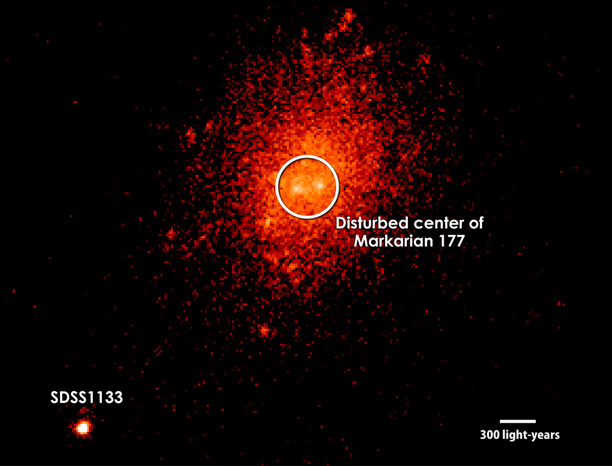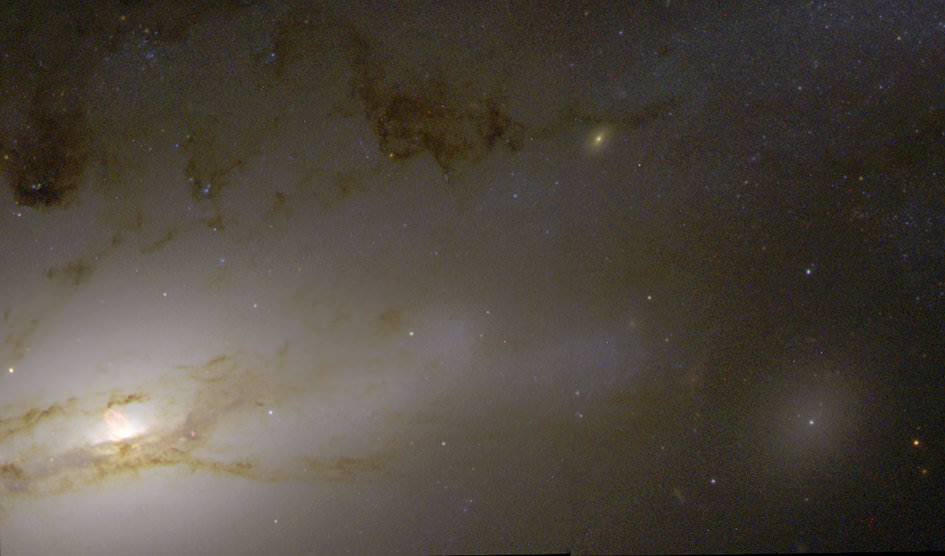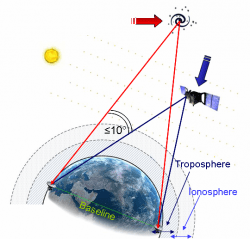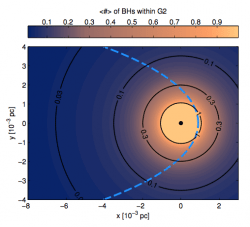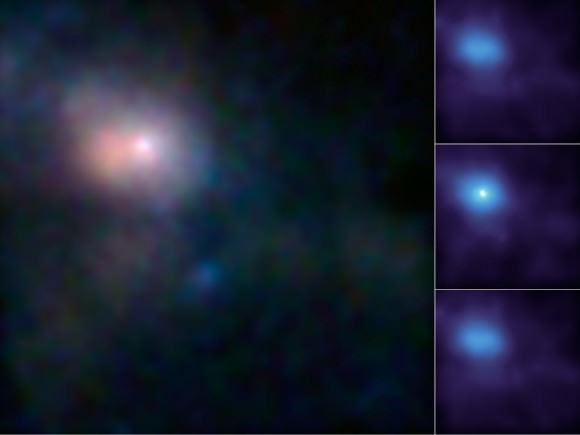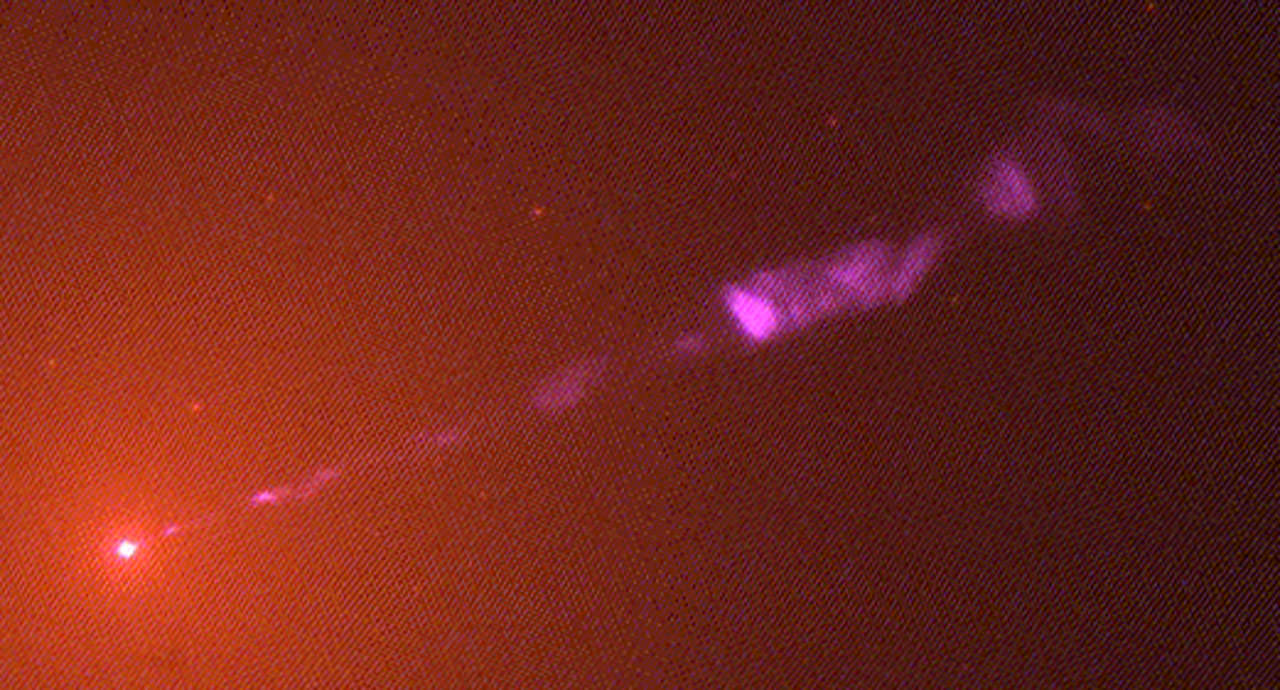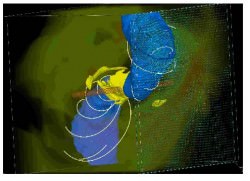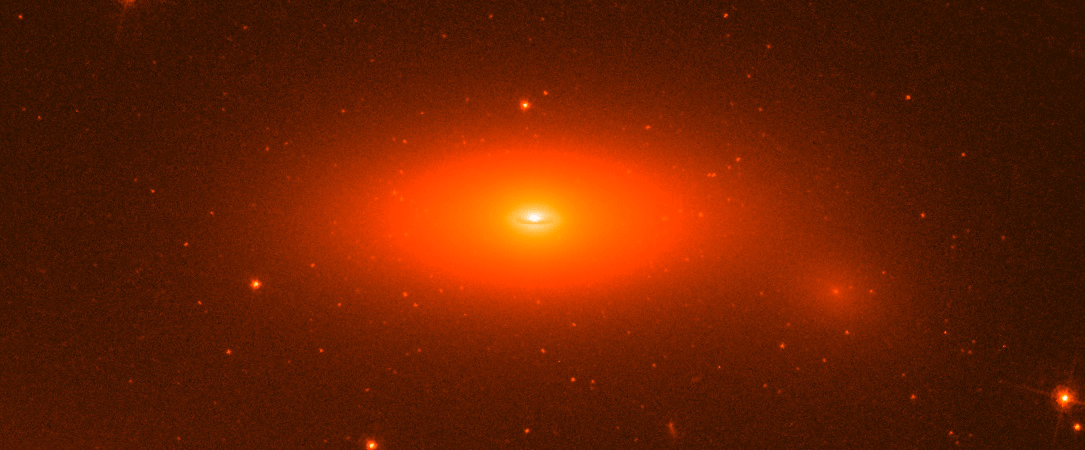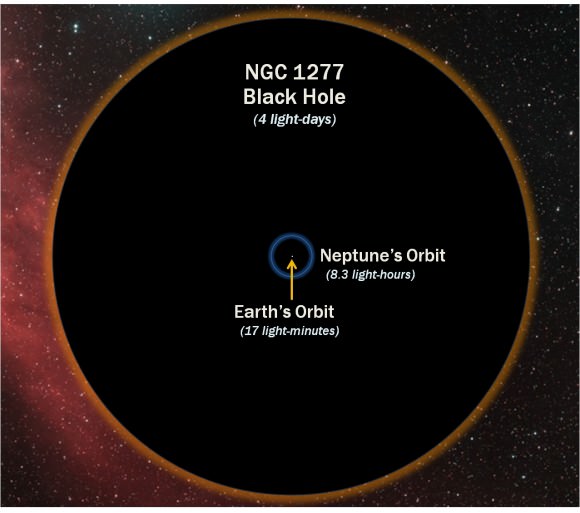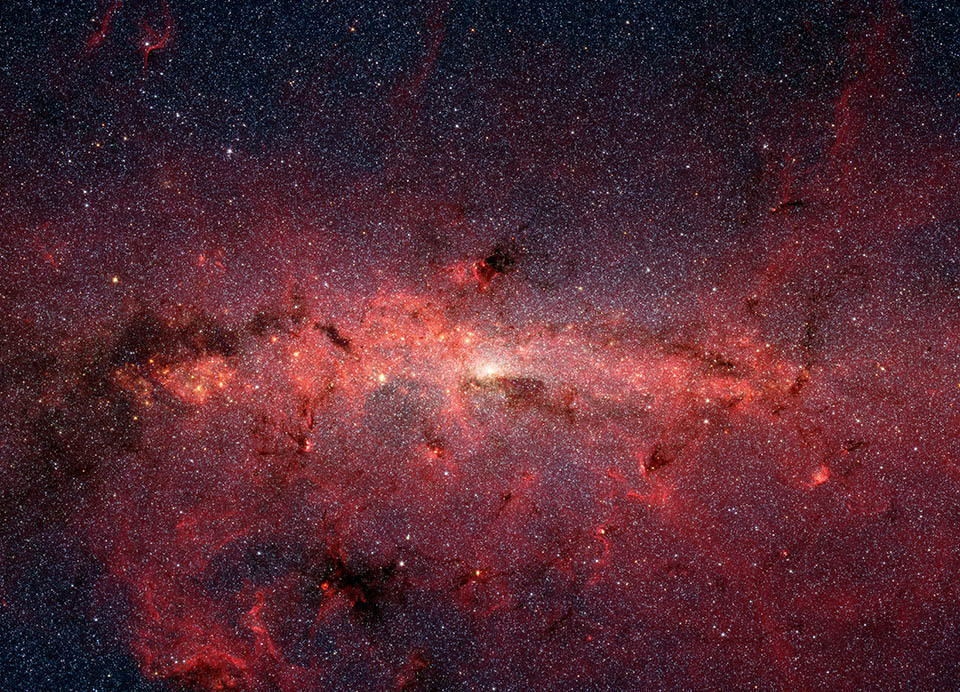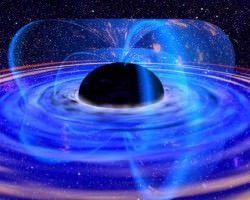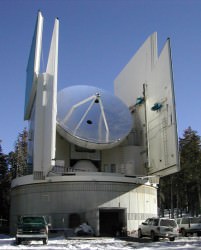Crazy things can happen when galaxies collide, as they sometimes do. Although individual stars rarely impact each other, the gravitational interactions between galaxies can pull enormous amounts of gas and dust into long streamers, spark the formation of new stars, and even kick objects out into intergalactic space altogether. This is what very well may have happened to SDSS1133, a suspected supermassive black hole found thousands of light-years away from its original home.
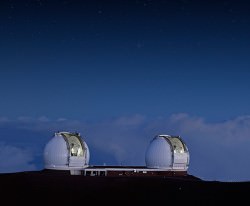
Seen above in a near-infrared image acquired with the Keck II telescope in Hawaii, SDSS1133 is the 40-light-year-wide bright source observed 2,300 light-years out from the dwarf galaxy Markarian 177, located 90 million light-years away in the constellation Ursa Major (or, to use the more familiar asterism, inside the bowl of the Big Dipper.)
The two bright spots at the disturbed core of Markarian 177 are thought to indicate recent star formation, which could have occurred in the wake of a previous collision.
“We suspect we’re seeing the aftermath of a merger of two small galaxies and their central black holes,” said Laura Blecha, an Einstein Fellow in the University of Maryland’s Department of Astronomy and a co-author of an international study of SDSS1133. “Astronomers searching for recoiling black holes have been unable to confirm a detection, so finding even one of these sources would be a major discovery.”
Interactions between supermassive black holes during a galactic collision would also result in gravitational waves, elusive phenomena predicted by Einstein that are high on astronomers’ most-wanted list of confirmed detections.
Read more: “Spotter’s Guide” to Detecting Black Hole Collisions
Watch an animation of how the suspected collision and subsequent eviction may have happened:
But besides how it got to where it is, the true nature of SDSS1133 is a mystery as well.
The persistently bright near-infrared source has been detected in observations going back at least 60 years. Whether or not SDSS1133 is indeed a supermassive black hole has yet to be determined, but if it isn’t then it’s a very unusual type of extremely massive star known as an LBV, or Luminous Blue Variable. If that is the case though, it’s peculiar even for an LBV; SDSS1133 would have had to have been continuously pouring out energy in a for over half a century until it exploded as a supernova in 2001.
To help determine exactly what SDSS1133 is, continued observations with Hubble’s Cosmic Origins Spectrograph instrument are planned for Oct. 2015.
“We found in the Pan-STARRS1 imaging that SDSS1133 has been getting significantly brighter at visible wavelengths over the last six months and that bolstered the black hole interpretation and our case to study SDSS1133 now with HST,” said Yanxia Li, a UH Manoa graduate student involved in the research.
And, based on data from NASA’s Swift mission the UV emission of SDSS1133 hasn’t changed in ten years, “not something typically seen in a young supernova remnant” according to Michael Koss, who led the study and is now an astronomer at ETH Zurich.
Regardless of what SDSS1133 turns out to be, the idea of such a massive and energetic object soaring through intergalactic space is intriguing, to say the least.
The study will be published in the Nov. 21 edition of Monthly Notices of the Royal Astronomical Society.
Source: Keck Observatory

